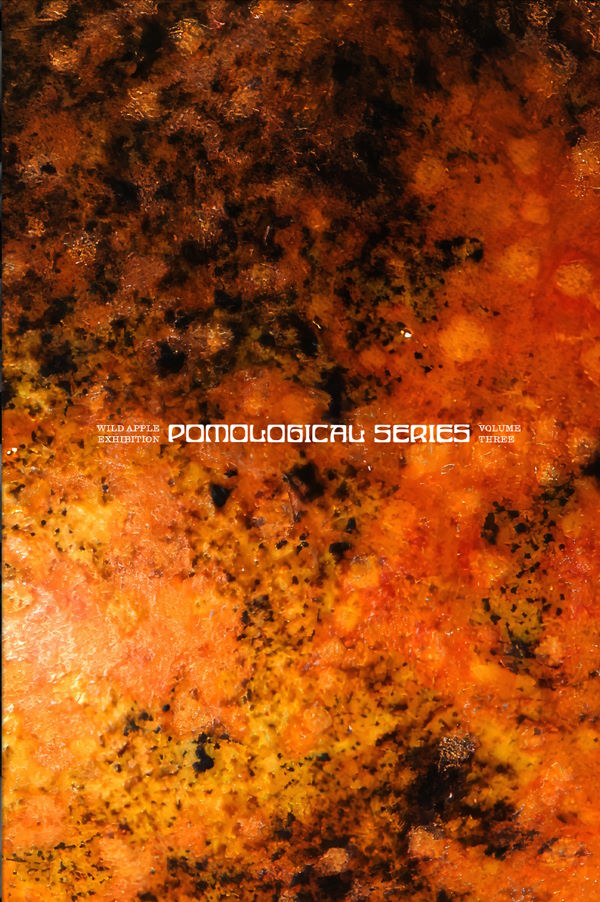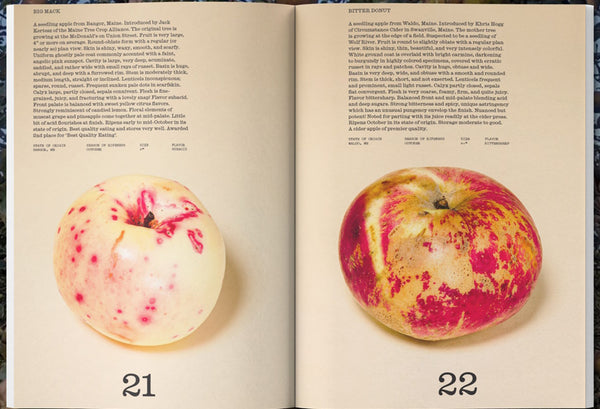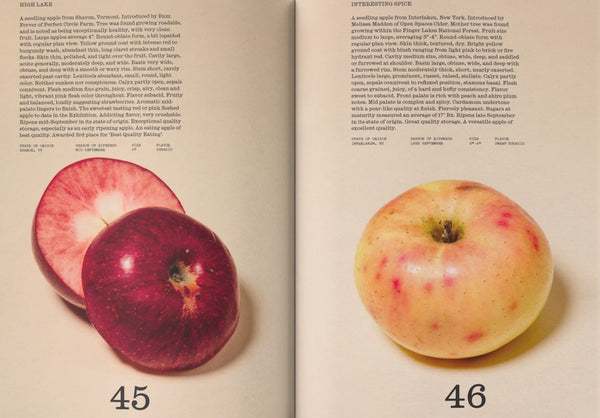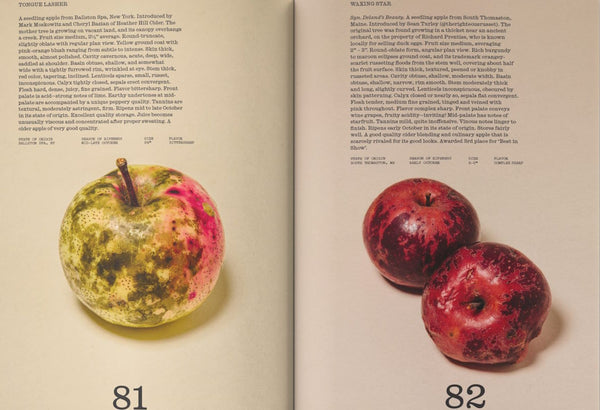Wild Apple Exhibition: Pomological Series Volume 3
Shipping calculated at checkout
These books are from a limited printing of 300 copies.
Because apples and pears do not breed true—a tree grown from a seed may bear fruit that bears little resemblance to either of its parents—new varieties appear all the time. In this age of industrialized agriculture and trademarked varieties, adventurous souls seek out, taste, and attempt to cultivate previously unrecognized fruits of great quality.
This volume presents and describes 70 specimens submitted to the 3rd Wild and Seedling Pomological Exhibition, held in November of 2022 in Ashfield, Massachusetts. The specimens were discovered across the United States and Canada by amateur enthusiasts and professional pomologists and orchardists, each of whom found something remarkable in what they believed to be a previously unknown variety, or one that had been thought lost.
Each of the specimens was photographed by renowned pomological photographer William Mullan. Descriptions detail who discovered the fruit and where, as well as the shape, size, color, skin texture and patterning, stem and calyx characteristics, and the physical qualities of the flesh. Descriptions of flavor and best use of the fruits were compiled from a composite of tasting notes from the submitters and attendees at the Exhibition.
The examples cataloged here are fascinating. The Death Fall Pear, originally found growing on an embankment over a highway in remote San Diego County, California, has a bittersharp flavor that makes it suitable for turning into perry. Steampunk Steve, an apple from Hampden, Maine, grew from the rootstock of an ornamental crabapple, its flesh “medium fine grained, crisp, juicy, cleaving, snappiness rivals Honeycrisp. Flavor balanced sweet. Front palate a rush of refreshing white table grapes. Mid-palate gives kiwis and orange juice. No tannins perceived. Unbelievably good.”
As the cover of this book makes clear, some of the most interesting varieties are not cosmetically what consumers may have been led to expect from years of grocery store shopping. All the more reason, then, to tip our hats to this effort to preserve and expand knowledge of an important resource.
Paperback. Color photographs throughout





